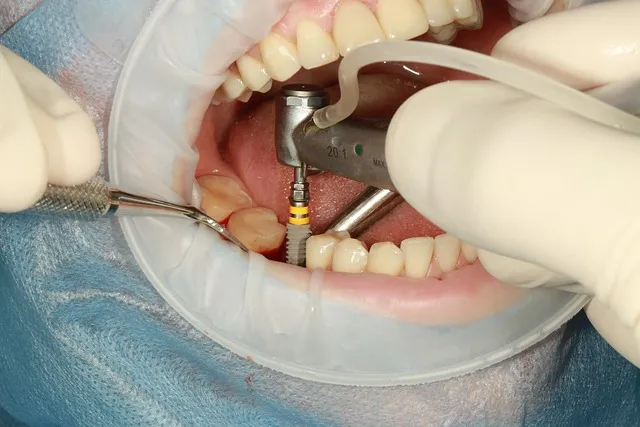|
Early pregnancy can show subtle signals. Recognizing the signs of successful implantation without bleeding, like cramps, fatigue, or breast tenderness, helps you notice changes before a test confirms pregnancy. |
Have you ever wondered if pregnancy could begin without any spotting or bleeding? You’re not alone; many believe that bleeding is the hallmark of implantation, yet that’s not always the case. In fact, successful implantation can happen quietly, with your body showing more subtle signs instead. Aches, breast tenderness, sudden fatigue, or even an unexplainable shift in how you feel may be your body’s early clues. Recognizing the signs of successful implantation without bleeding can give you reassurance and clarity even before a test confirms it.
15 Signs of Successful Implantation Without Bleeding
Pregnancy doesn’t come with a single flashing light. It’s a collection of whispers. Some you notice right away, others only in hindsight. Let’s walk through the most common implantation without bleeding symptoms that can show up before a test confirms anything.
1. Mild Cramping or Tingling
It's not the kind of cramp that makes you curl into a ball. These are softer, almost like tugging or fluttering deep in the lower abdomen. Women often describe them as different from period cramps, less painful, more like your body is stretching itself into something new. These small shifts are often the first successful implantation signs.
2. Increased, Thicker Discharge
If you track cervical mucus, you’ll notice this one. Instead of being clear and stretchy like around ovulation, the discharge becomes creamier and thicker. White, almost lotion-like. It’s your body adjusting its hormones to protect the embryo. Among the implantation signs, no bleeding is one that shows up consistently for many women.
3. Bloating or Feeling Full
That familiar waistband pinch, but earlier than you’d expect, progesterone slows digestion, and water retention kicks in. The result? A belly that feels heavy and full. Not painful, just enough to make you loosen your jeans.
4. Constipation or Slowed Digestion
Trips to the bathroom may take longer. Digestion becomes sluggish, thanks to rising progesterone. It’s not glamorous, but it’s often listed among early pregnancy symptoms without bleeding. A stool softener isn’t always the answer; it’s your hormones shifting gears.
5. Tender or Sore Breasts
Imagine putting on your bra and wincing. The tenderness feels different from PMS. There’s heaviness, almost a swelling sensation, like your body is preparing for something bigger. Many women flag this as one of the first implantation symptoms without spotting.
6. Nausea or Mild Morning Sickness
This one sneaks in early for some. A whiff of coffee makes your stomach turn. A favorite food suddenly feels wrong. Even brushing your teeth might bring a wave of queasiness. It doesn’t wait for the missed period; it can appear right after implantation.
7. Headaches
Hormones surge, blood volume increases, and a dull headache settles in. Not every woman gets them, but when they appear alongside other subtle signs of implantation, they can hint that changes are underway.
8. Mood Swings or Heightened Emotions
You’re laughing at a commercial one minute, crying at the same commercial the next. Estrogen, progesterone, and hCG levels climb fast, creating sudden waves of emotion. These emotional swings belong firmly in the basket of early pregnancy signs after ovulation.
9. Rise in Basal Body Temperature (BBT) / Implantation Dip
If you’re charting BBT, you may spot a one-day drop around implantation, followed by a steady rise. That tiny dip is often referred to as the “implantation dip.” It’s not foolproof, but when paired with other signs, it’s another clue in your fertility detective work.
10. Fatigue or Low Energy
Waking up tired even after eight hours of sleep. Midday naps are calling your name. The fatigue feels different, deeper, like your body is working behind the scenes on something important.
11. Food Cravings or Aversions
The smell of grilled chicken makes you gag, yet you crave pickles at 10 a.m. This isn’t your normal appetite. Hormones can flip your food preferences quickly. It’s one of the quirkiest pregnancy symptoms before a missed period.
12. Increased Sense of Smell or Heightened Senses
Perfume feels overwhelming. The faintest cooking odor turns into a wave. Some women say even water tastes “different.” These sharper senses often follow soon after implantation.
13. Mild Lower Back Aches
A dull, dragging ache near your lower back might appear. It’s not the same as pre-period pain, which tends to feel sharper. This is more of a constant background hum.
14. Light Head Congestion or Stuffiness
Your nose may feel clogged for no reason. Rising estrogen swells the blood vessels in your nasal passages, creating what feels like seasonal allergies. Only it’s not allergy season.
15. Emotional Sensitivity or Tearfulness
Small things suddenly matter more. Songs bring tears. A stranger’s smile lingers in your mind. These tender emotional changes, subtle as they seem, often show up in the early weeks of pregnancy.
Why Many Women Have No Implantation Bleeding
Implantation doesn’t always cause bleeding. The fertilised egg attaches to the uterus wall between 6 and 12 days after ovulation. When this happens, tiny vessels may or may not rupture. If they remain intact, there’s no visible blood.
Some women have a thicker uterine lining or faster hormonal balance, both of which prevent spotting. When progesterone levels rise quickly, they help the tissue seal faster. That’s why the process can stay hidden even though implantation succeeds.
In an NIH-observed cohort of 221 women, researchers found the first appearance of hCG, the hormone that marks implantation, between these 6 and 12 days. Out of 141 pregnancies that lasted beyond six weeks, 84 % implanted on days 8 to 10. When implantation happened later, the risk of early loss increased (13 % loss at day 9, 26 % at day 10, 52 % at day 11, 82 % after day 11).
Therefore, early implantation often finishes before any visible bleeding can even start. It’s a quiet success, not a missed sign. Your body may still show other gentle symptoms; these are the clues to notice.
Implantation vs PMS: Spotting the Differences
Many women confuse implantation with PMS because both share tiredness, cramps, and mood shifts. Yet there are simple differences that reveal what’s actually happening.
|
Symptom |
Implantation (No Bleeding) |
Typical PMS |
|
Cramping |
Light, short fluttering |
Sharper, cyclic pain before period |
|
Breast Changes |
Heavier, swollen feeling |
Mild tenderness only |
|
Discharge |
Creamy, white, thicker |
Clear or none |
|
Mood Pattern |
Sudden, emotional bursts |
Predictable irritability |
|
Fatigue |
Deep tiredness despite rest |
General pre-period fatigue |
|
Appetite Change |
Sudden cravings or smell aversion |
Slight appetite difference |
|
Basal Body Temperature |
Tiny dip then steady rise |
Drops before the period starts |
Still, timing helps to tell the truth. Implantation symptoms without spotting usually appear a few days earlier than PMS discomfort. If your discharge looks creamier or cramps feel softer, watch the calendar. Those might be early pregnancy signs with no bleeding rather than PMS.
Why Implantation Can Happen Without Bleeding
The idea that spotting is necessary for implantation is a myth. Here’s why it often happens without any bleeding:
-
Tiny Blood Vessels May Not Break: During implantation, the egg burrows into the uterine lining. Sometimes, blood vessels may rupture and cause light spotting, but not always. Sometimes, they stay intact.
-
Timing Varies: Bleeding might happen later in some cases and be mistaken for a light period.
-
Hormonal Balance: If your hormone levels stabilize quickly, you may not experience visible bleeding.
-
Anatomy Differences: Some women’s uterine linings are more prone to bleeding than others, and vice versa.
So, can implantation happen without bleeding? Yes. And in fact, it often does.
A prospective NIH study that followed 151 clinical pregnancies using daily diaries found that only 9% reported bleeding in the first 8 weeks. Notably, 86% of those who bled went on to have live births.
Even without spotting, your body may still signal implantation through:
-
Mild cramping
-
Mood swings or headaches
-
Cervical mucus changes
-
Mood swings or headaches
All these are common and meaningful signs, even if there’s no blood in sight. The body responds in many different ways. Bleeding is just one possibility.
How Soon After Implantation Can You Take a Pregnancy Test?
Knowing when to test is essential. Testing too early might give a false negative. Timing matters when testing for pregnancy, especially after silent implantation..
Here’s what you should know:
-
Wait at least 3 to 5 days after suspected implantation
-
Use early-result tests that detect hCG as low as 6.5 mIU/mL
-
Test using morning urine for the highest concentration
Implantation without bleeding can make it harder to pinpoint the right time to test, so go by other signs like BBT changes or early cramping.
Tips for Accurate Testing:
-
Choose a pink-dye test (more reliable than blue)
-
Test every 48 hours if the first result is unclear
-
Confirm with a blood test for early verification.
Patience matters here. hCG builds slowly. False negatives are common before the right time.
How Long After Implantation Can You Test Positive?
When does implantation happen? Usually between day 6 and day 12 after ovulation. Your body begins producing hCG once the embryo attaches. Most urine tests pick it up about two to three days later, but for reliability, wait until the day your period is due.
Can You Be Pregnant Without Any Implantation Symptoms?
Yes. Not every woman feels implantation. Some only notice once the test turns positive. A 2025 retrospective cohort study reports that 74.4% of pregnant individuals experienced vaginal bleeding during pregnancy, mostly in the first trimester (67.1%). That means many women had no implantation bleeding at all.
Here’s how pregnancy may look without classic symptoms:
-
No cramps, no discharge changes, just a missed period
-
Fatigue without nausea
-
A gradual rise in BBT but no other signals
-
Positive test without any early discomfort
So, can implantation occur without bleeding? Absolutely. Silent implantation is common. What matters is the embryo attaching successfully, not how many symptoms appear.
When to See a Doctor About Implantation Symptoms
For most women, early changes are manageable. Still, it’s important to know when to seek help. If you notice sharp abdominal pain, heavy bleeding, or dizziness, call your provider. They can confirm how to know if implantation was successful using blood tests or early ultrasounds.
If you’re going through fertility treatment, tracking even subtle signals becomes more meaningful. Doctors can guide you better when you bring detailed notes about your cycle, energy levels, or cramps.
Final Thoughts
A healthy pregnancy can absolutely begin without implantation bleeding. Recognizing the signs of successful implantation without bleeding, such as mild cramps, fatigue, or mood changes, helps you tune into your body before a missed period. While bleeding can be one sign, it is not a requirement.
By paying attention to these early cues and confirming with a pregnancy test or medical advice, you’ll feel more informed and reassured on your journey. Remember, no implantation bleeding while pregnant is not only possible but also quite common.
If you notice mild implantation signs without spotting, give your body a few days and take a pregnancy test for clarity.
Read Also: Top 9 Positive Signs after Embryo Transfer: Key Symptoms
अक्सर पूछे जाने वाले प्रश्नों
What’s the earliest sign of pregnancy after ovulation?
Subtle cramps and changes in discharge often appear around 6–12 days after ovulation.
Can you feel implantation cramps without bleeding?
Yes. Cramping can happen alone, without any spotting at all.
How to know if implantation was successful?
The most reliable way is a positive test after a missed period. Symptoms help, but testing confirms.
Can you have all implantation signs without bleeding and still not be pregnant?
Yes. Some PMS symptoms mimic implantation signs. That’s why testing is key for confirmation.
What’s the most reliable early sign of implantation?
Consistently high basal body temperature after ovulation is one of the strongest indicators.
Can cervical mucus alone indicate pregnancy?
It can hint but not confirm. Mucus consistency varies for many reasons including infection or hormones.
How long do implantation symptoms last?
They may last a few hours to 2–3 days. Each person’s experience is different.
Should I worry if I have no symptoms at all?
No. Many women have zero early symptoms yet go on to have healthy pregnancies.
लेखक





